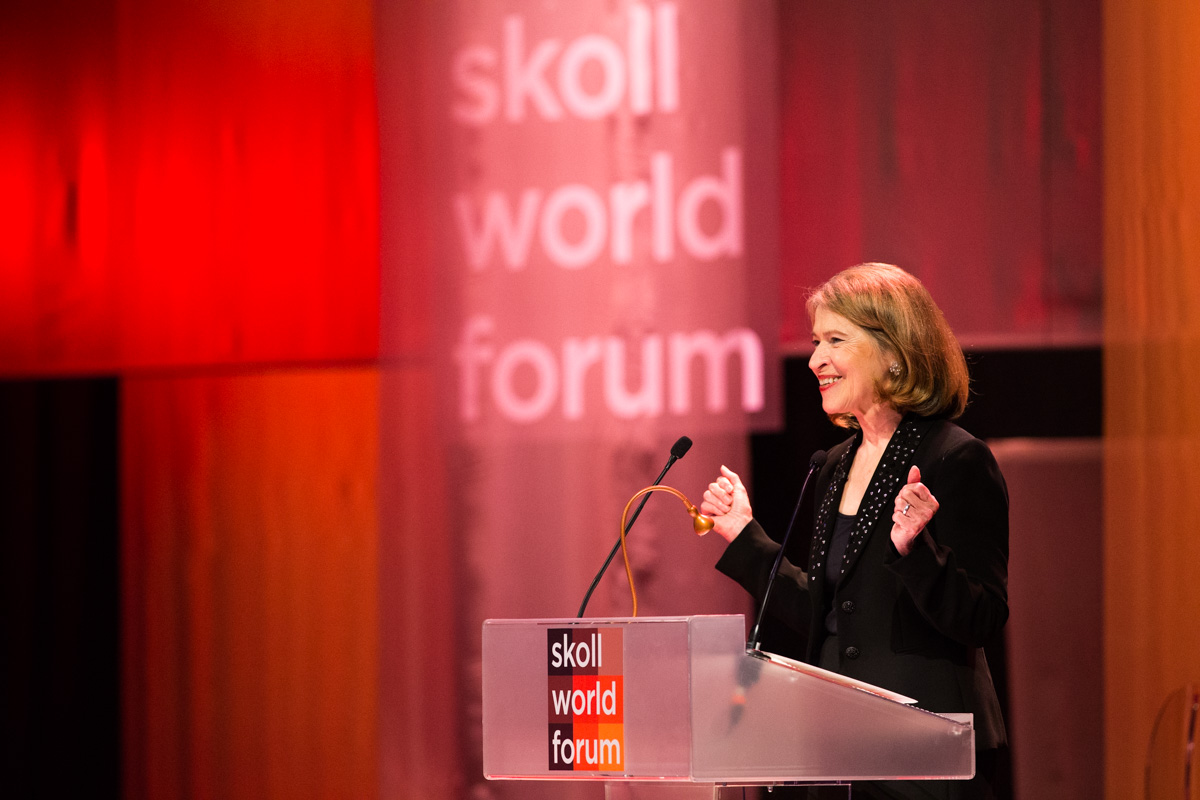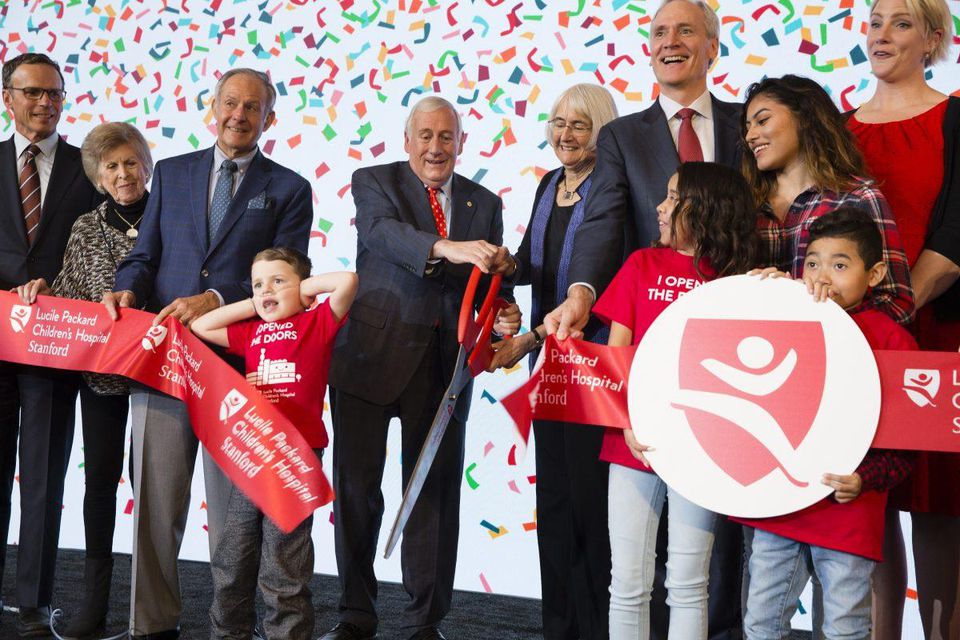Forbes Columns
Driving Nonprofit Impact With Dollars, Choices
According to the Stanford Survey on Leadership and Management in the Nonprofit Sector—a study that we conducted while developing our book Engine of Impact—more than 80% of nonprofits struggle with at least one core leadership and management issue. More than half of nonprofits, for example, struggle to perform well in the areas of board governance, fundraising, and impact evaluation.
While donors may feel powerless when facing this troubling data, we argue that the nonprofit sector is poised to become more effective — if donors can optimize their power. Donors present a huge potential force in not only supporting but leading the nonprofit sector. By voting with their checkbooks, donors can exert the power to encourage, even demand, that nonprofits address and overcome core leadership and management challenges.
Read our Forbes column here to learn more about how donors can best optimize their power today.
How Well Does Your Nonprofit Board Measure Up?
What distinguishes high-impact nonprofit organizations from their good-enough (or worse) counterparts? On the basis of our combined 60 years as students, leaders, and advisors of organizations in the nonprofit sector, we developed a model for analyzing the essential elements that define excellence in the sector.
We have discussed these “essentials,” and the way that most nonprofits struggle to master them, in a number of our Forbes articles. We also describe them at length in our book, Engine of Impact: Essentials of Strategic Leadership in the Nonprofit Sector. There are seven elements in our model: mission, strategy, impact evaluation, insight and courage, organization and talent, funding, and board governance.
In listing these elements, we purposely designate board governance as the final item in the series. It is, in effect, the capstone element that brings all of the other elements together—the one that keeps an organization moving forward while also keeping it on track.
Read more about the critical importance of board governance in our Forbes column here.
A Better Approach To Winning: Lessons From The Positive Coaching Alliance
At first glance, the field of youth sports coaching doesn’t seem like a promising arena for achieving significant social impact.
But Jim Thompson arrived at a different view. When he was a young professional—and, not incidentally, a young father—he had a life-altering epiphany: The wrong kind of coaching takes a huge toll on children, whereas the best kind of coaching has a positive and often transformative effect on them. That revelation led Thompson to create Positive Coaching Alliance (PCA), a nonprofit organization that has reached more than 8.6 million young athletes since its founding in 1998.
During his two-decade-long journey to create and build PCA, Thompson has exemplified the practice of strategic leadership—starting with his ability to establish a clear mission on the basis of sound insight. (In our book, Engine of Impact, we explore seven elements of strategic leadership, including mission and insight and courage.)
In our Forbes column here, drawing from our in-depth conversation with Thompson, are several lessons that have emerged from that journey.
To Lead Well, Think Hard About The Legacy That You’ll Leave
In 2018, we interviewed three highly accomplished social sector leaders who had recently stepped down from positions in which they had achieved substantial impact. Two of them—Sally Osberg, of Skoll Foundation, and Matt Bannick, of Omidyar Network—had each spent more than a decade at the helm of a major funder that has emphasized innovative approaches to pursuing impact in the sector. The third leader, Chris Dawes, served as president and CEO of Lucile Packard Children’s Hospital (known as Packard Children’s), and in that role he mastered the complex business of overseeing a top-tier medical institution.
Each of these leaders, in short, left behind a powerful engine of impact—a vehicle of positive change that will outlast their tenure in the organizational driver’s seat. In our conversations with them, they offered lessons on the principles and practices that enabled them to build, tune, and fuel their particular engine of impact.
You can find those insights in our latest Forbes column here.
‘Tough-Minded Optimism’: Savvy Leadership Advice From 17 Years At The Skoll Foundation Helm
Sally Osberg joined the Skoll Foundation– which was created by Jeff Skoll, the first employee and first president of eBay – as employee number one in 2001 and subsequently became its first president and CEO. She stepped down from that position earlier this year.
During her time at the helm, Osberg oversaw the philanthropy’s investment in more than 100 entrepreneurial organizations worldwide. She also led Skoll through three distinct phases – “startup,” “get going and do it,” and “renewal,” to use her terms – that reflect her approach to leadership. “You’re always sowing new seeds,” she explained. “The world is changing, and you have to adapt.”
Recently, Osberg took time to share with us her views on strong leadership. Although her wisdom springs from her many years in the social sector, much of it applies equally well to the private sector. We share a summary of her insights in our latest Forbes column here.
Turning ‘Doing Well By Doing Good’ Into Real Millennial Social-Sector Leadership
Do well by doing good. Within the social sector and beyond, that phrase that has become a much-abused cliché and even the subject of some recent controversy. But on university campuses today, it speaks to something very real: Students today are eager pursue viable careers that will enable them to achieve beneficial social impact.
But how? This urge to do good, we have found, is often as inchoate as it its fervent. Many of the students we encounter through our teaching at Stanford Graduate School of Business (GSB) do find ways to serve genuine human needs. Too often, though, students become captivated by “business for good” models that are long on marketing appeal and short on proven impact: buy-one-get-one schemes that allow consumers to send some product to the poor and needy simply by purchasing that product for themselves, or enterprises that market fancy branded products (ice cream, salad dressing, and the like) and give some of the profits “to charity.”
The notion that efforts of this kind will make an appreciable dent in the world’s most pressing problems is dubious at best. Students deserve better.
In our previous Forbes column article, “Big Topic on Campus–Doing Well By Doing Good,” we discussed the increasingly high profile that the social sector now enjoys at colleges and universities, and we linked that trend to our longstanding “crusade” to bring greater rigor to the sector.
In this article, we will delve into the challenge of creating academic programs that equip students to have lasting impact.
Big Topic On Campus: Doing Well By Doing Good
Once upon a time, the visiting “rock stars” on college campuses were, well, rock stars. Or at any rate they were people who exuded rock-star glamour—luminaries from the world of entertainment and celebrity, or high-profile figures from “power” fields such as government, law, and business.
It’s different now. Today, the speakers who draw the biggest and most boisterous crowds—who fill students with a yearning to follow in their footsteps—are often dedicated men and women who run “do-gooding” organizations. They are nonprofit leaders and social entrepreneurs. In many cases, they work in the poorest, least-glamorous regions of the world.
But even as we celebrate this progress, we are left with some nagging questions: How well are we translating the work of scholars who study social sector issues into programs for students who are eager to become the next Paul Farmer? How well are we actually preparing these students to be effective leaders who can achieve substantial impact?
Read our thoughts on the challenges of teaching “impact” in our Forbes column here.
Business Strategy For The Social Sector: In Praise Of Economist Sharon Oster’s 6 Forces Model
To succeed, must nonprofit leaders treat their organization as rigorously as a business? Must they heed the core lessons of business strategy? Yes, definitely. Or must they recognize that a nonprofit is fundamentally different from a for-profit enterprise? Must they learn to operate in an environment unlike the one that business leaders are used to navigating? Yes, definitely.
Working through that apparent conundrum is central to the task of strategic leadership in the nonprofit sector. High-performance nonprofit organizations, we have learned over many decades of studying them, closely resemble high-performance companies—except for crucial ways in which they don’t resemble companies at all.
Read more about the value of Oster’s 6 Forces Model in our Forbes column here.
A ‘Mother’s Vision’: Building And Scaling A Premier Children’s Hospital
On the virtual tour of its new building, Packard Children’s declares, “Healing is an art. And a science. And, in this case, a place.”
With its strong record of high performance, Packard Children’s has reached that “place” because its leaders, over the course of more than three decades, have practiced strategic leadership—a mode of nonprofit excellence that incorporates seven essential elements. Only by excelling at all seven of those elements, we have found, can a nonprofit earn the right to scale its impact. (We explore all of these elements, along with the principle of earning the right to scale, in our book, Engine of Impact.)
In our latest Forbes Column here, we draw upon insights from two leaders of Packard Children’s, Susan Packard Orr, and Chris Dawes, and highlight their approaches to strategic leadership.
‘Unparalleled Leadership’: Lessons From The CEO Of A Top Children’s Hospital
Packard Children’s is a pillar of the Bay Area community, and we number ourselves among the many deep admirers of Dawes’s leadership. Our ranks include Susan Packard Orr, the esteemed philanthropist who served on the hospital’s board of directors for many years and daughter of Lucile Packard, for whom the children’s hospital is named. “Chris Dawes was the driving force,” she said. “He has a wonderful way of getting along with everyone but still pushing – always pushing, pushing towards the goals.”
“We are only as good as our people.” We quote that piece of common wisdom in our book, Engine of Impact, and we add an important corollary: “your people, however good, will thrive only in a strong organization with wise and responsive leadership.” Dawes, in our view, exemplifies leadership of that caliber. So, on the occasion of his retirement from Stanford Children’s, we asked him to sit down with us in Menlo Park and share insights from his many years at the helm. We summarize several of those insights in our Forbes column here.
- 1
- 2
Subscribe to receive updates on new content









